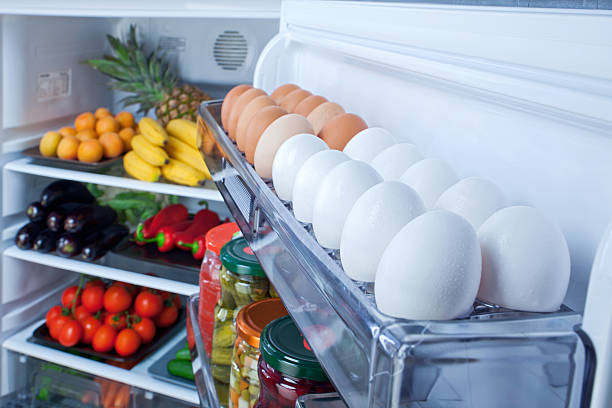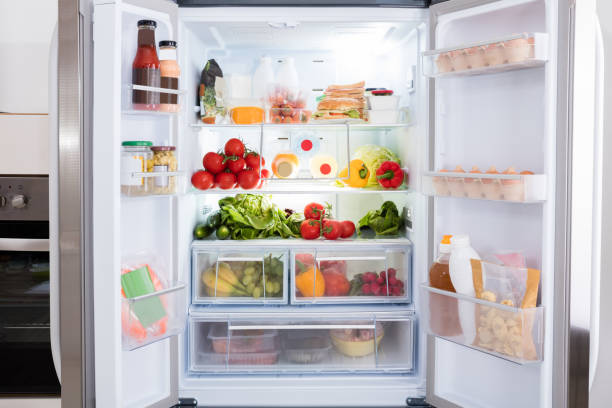In the modern home, refrigerators are indispensable appliances, playing a crucial role in food preservation and storage. However, amidst rising energy costs and a growing emphasis on sustainability, understanding the electrical consumption of household appliances, particularly refrigerators, has become more important than ever. The question of “How Many Amps Does A Refrigerator Use” is not just a matter of technical curiosity but a critical component of household energy management. This article delves into the intricacies of refrigerator energy use, breaking down the factors that influence their amperage and, consequently, their impact on your electricity bill.
With insights drawn from industry experts and comprehensive analysis, we aim to shed light on the average amperage draw of various refrigerator types, from the compact models adorning dorm rooms to the feature-rich, French-door refrigerators anchoring modern kitchens. Whether you’re a homeowner looking to optimize your appliance’s energy efficiency, a renter aiming to estimate utility costs, or simply an enthusiast eager to understand more about how your home works, this exploration provides valuable knowledge. By demystifying the technical aspects and highlighting practical tips for energy conservation, this article not only establishes expertise on the topic but also demonstrates the value of understanding your refrigerator’s energy usage.
As we navigate through explanations on compressor cycles, defrost mechanisms, and the influence of size and age on energy consumption, our goal is to equip you with the information necessary to make informed decisions about your household appliances. So, whether you’re contemplating a new purchase or looking to minimize the environmental footprint of your current refrigerator, join us on this enlightening journey. Engage your curiosity, and let’s uncover the intricacies of refrigerator amperage together, ensuring that your next glance at the electricity bill comes with a deeper understanding and perhaps, a pleasant surprise.
What Are Refrigerator Amps and Why Do They Matter?

Refrigerator amps, also known as amperes, are units of measurement used to quantify the amount of electrical current being drawn by your refrigerator. Understanding how many amps your fridge uses can help you make more informed decisions about energy consumption and ultimately save money on utility bills. In simple terms, amperes refer to the rate at which electricity flows through a circuit. The higher the amperage, the more electricity is flowing through and being used by your refrigerator. This is why it’s important to know how many amps your fridge is using, as it directly affects your energy consumption and therefore your utility bills.
Importance of Understanding Refrigerator Energy Consumption
It is important for consumers to understand how much energy their appliances use, including refrigerators. There are two main reasons for this:
- Environmental impact – Refrigerators contribute to residential electricity usage and associated greenhouse gas emissions. Being aware of their energy consumption can help identify opportunities to lower environmental impact through efficiency upgrades or alternative energy sources.
- Cost savings – Refrigerators are one of the largest energy-using appliances in homes. Knowing their electricity usage helps estimate costs and identify potential savings from efficiency improvements.
To gain a meaningful understanding of refrigerator energy use, it is helpful to learn some basic terminology related to electricity and become familiar with the factors that influence energy consumption.
Overview of Relevant Terms
- Watts – The rate of electricity consumption. The wattage rating on appliances shows their power demand.
- Amps – The amount of electric current flowing through a circuit. Most households have 120-volt circuits, so amps = watts/120.
- Volts – The electric potential difference that causes current to flow through circuits. Standard household voltage is 120V in North America.
- kilowatt-hours (kWh) – The total amount of electricity used over time. Utility bills show consumption in kWh.
Typical Refrigerator Wattage and Amp Usage
The size, configuration, and features of a refrigerator determine its electricity demand and usage:
- Wattage range – 300-800 watts for standard household refrigerators
- Amps – 2.5 to 6.7 amps (=300-800 watts/120 volts)
- Voltage – 120 volts is the North American standard
So a typical 20 cubic foot refrigerator runs at around 500 watts, drawing 4 amps of current (500/120=4.2 rounded down).
Factors Affecting Refrigerator Energy Consumption
Several variables influence how much electricity a refrigerator uses:
- Age – New ENERGY STAR certified models are significantly more efficient than those from over 10 years ago.
- Size – Larger units use more energy to cool a bigger space.
- Features – Options like through-door water/ice dispense, touchscreen displays use extra electricity.
- Temperature settings – Lower freezer and fridge temperatures increase energy consumption.
- Door openings – Heat enters each time the door is opened, forcing the refrigerator to work harder to cool back down.
Global Comparison of Average Refrigerator Energy Use
There is significant variation in refrigerator energy demand globally based on size, climate, and efficiency standards:
| Location | Average kWh/year |
| United States | 650 |
| Europe | 325 |
| China | 275 |
| India | 115 |
More efficient standards and smaller average unit sizes account for lower consumption outside the US.
How Much Electricity Does a Refrigerator Use?
We’ll focus on typical 120 volt, 16-20 cubic foot refrigerator/freezer combination units in a North American home.
Key details:
- Standard 3-6 amp current draw
- Similar electricity demand for fridge and freezer sections
- Cycles on and off to maintain temperature rather than running continuously
- Annual electricity consumption around 500-600 kWh
This amounts to an estimated annual cost of $208 for 600 kWh at $0.12 per kWh. By understanding how much power it takes to run a refrigerator, consumers can better manage their energy use and expenses.
How Much Electricity Does a Mini Fridge Use?
Smaller “mini” or “dorm” refrigerator units have substantially lower energy demands:
- Wattage – 50-100 watts based on size
- Annual electricity – Around 310 kWh for a 3.2 cubic foot unit
- Usage impact – A lightly used mini fridge will consume less than estimated; a heavily used one may use more
Mini fridges are an energy efficient option for small spaces or as a secondary unit. Their electricity usage varies based on model, configuration, and real-world usage patterns.
How Does Refrigerator Usage Impact Your Home and Environment?

Two main impacts of refrigerator electricity usage:
- Home energy use – Refrigerators account for 18-20% of total residential energy consumption in a typical home.
- Greenhouse gas emissions – Fossil fuels burned to generate electricity release CO2 and other greenhouse gases. More efficient refrigerators have less environmental impact.
How to Reduce Refrigerator Energy Use
There are several ways homeowners can reduce the amount of electricity consumed by their refrigerator:
- Regularly defrost and clean condenser coils for maximum efficiency
- Ensure refrigerator is set to optimal temperature (37°-40°F for main compartment, 0°F for freezer)
- Avoid overloading refrigerator or blocking air vents
- Upgrade to an Energy Star certified model for maximum efficiency
Other tips:
- Chest freezers are more efficient than upright units
- Unplug and dispose of any rarely used secondary refrigerators
Alternatives to Traditional Power Sources
While most refrigerators run on grid electricity, alternatives like solar panels are also an option:
- Solar potential – In optimal sun conditions, 1-3 panels with 250+ watt capacity each can power a refrigerator.
- Other renewables – Small wind turbines or micro-hydro projects may also generate sufficient electricity in some scenarios.
These options allow refrigerators to be powered by renewable energy rather than fossil fuels, but have higher upfront costs.
Additional Considerations
Households exploring ways to improve refrigerator energy efficiency should take into account:
- Upfront investment – Energy Star models cost more, solar power setups require large capital expenditure.
- Payback period – This depends on electricity savings and incentives. Solar power return on investment can take many years.
- Maintenance – Solar panels and other renewables require maintenance and repairs over time.
- Responsible disposal – Old refrigerators and solar systems require proper end-of-life disposal and recycling.
Government rebates, tax credits, and regulations also impact the cost-benefit analysis. Research your local offerings.
Future Trends in Refrigerator Technology
Ongoing innovation aims to enhance refrigerator energy efficiency through improved design and “smart” features:
- Advanced components – Variable speed compressors and fans, optimized evaporators, “vacuum panel” insulation all lower electricity usage.
- Connectivity and sensors – “Smart” fridges can track usage patterns, self-diagnose issues, and allow remote control of temperature and settings.
These technologies will become standard in the coming years, allowing consumers to save money and reduce environmental impact. Government efficiency mandates are also pushing the refrigerator industry in greener directions.
Conclusion
Refrigerator electricity consumption varies based on size, configuration, usage patterns and efficiency. Typical units draw 3-6 amps at 120 volts, using 500-600 kWh annually. Improving efficiency through regular maintenance, better models, and renewable energy can reduce home energy costs and environmental impact. Consumers should understand refrigerator energy use as household appliances are key drivers of residential electricity demand.
